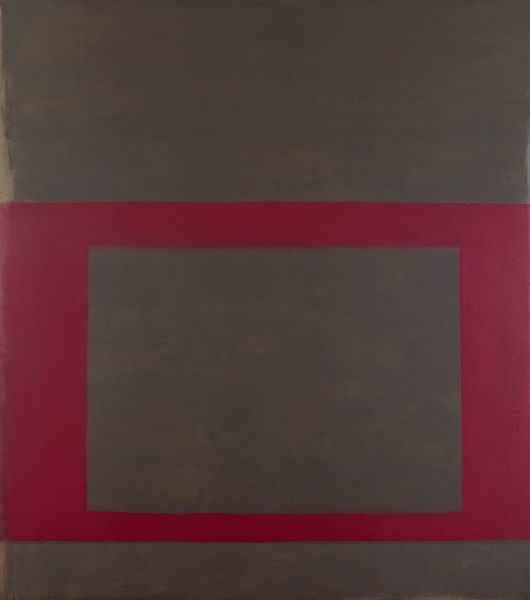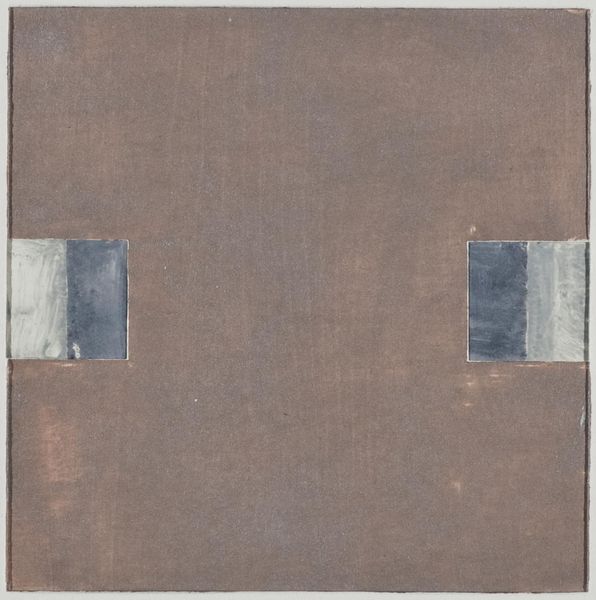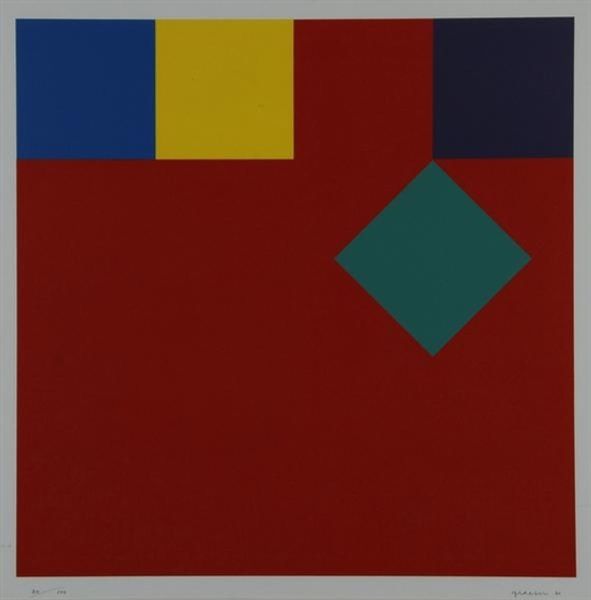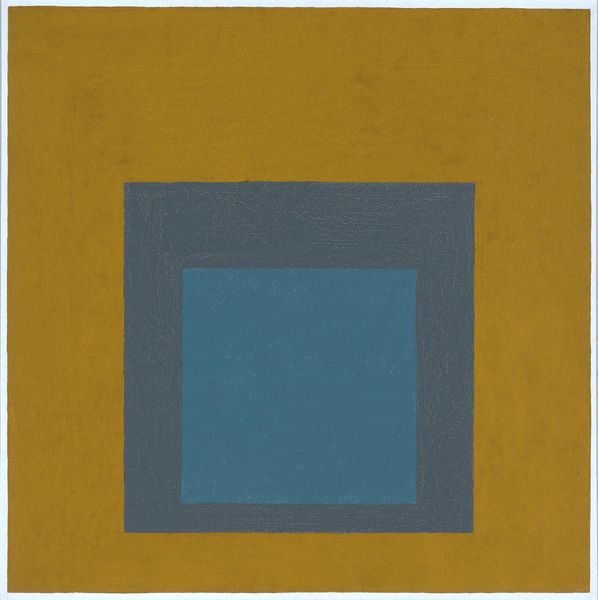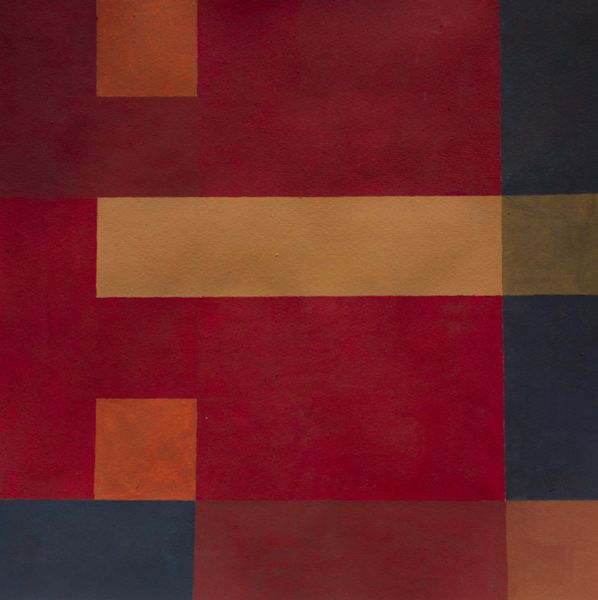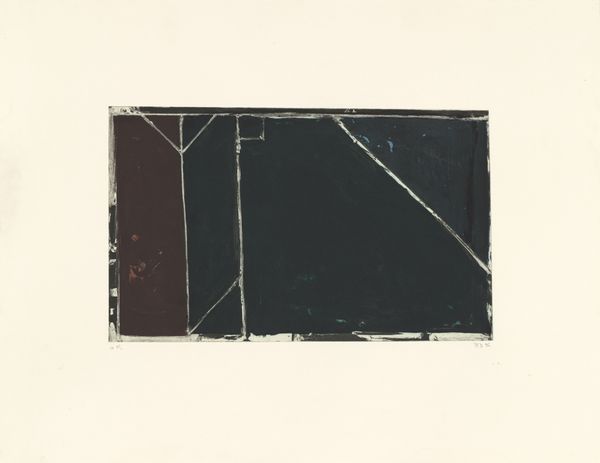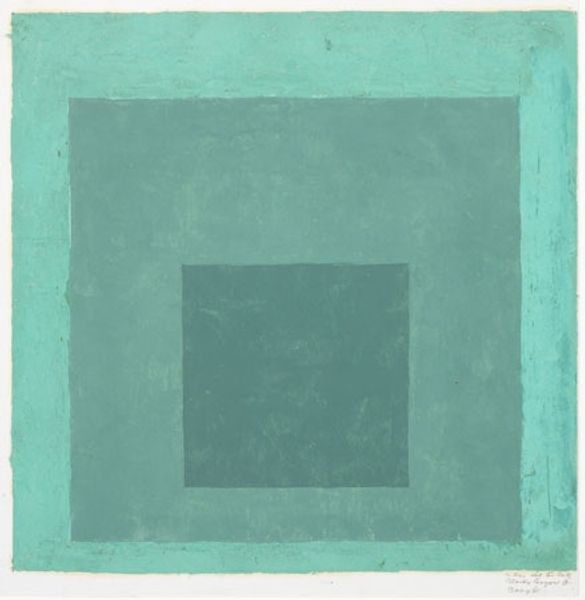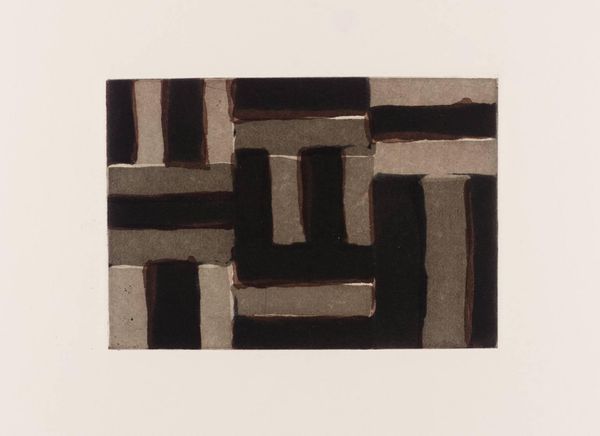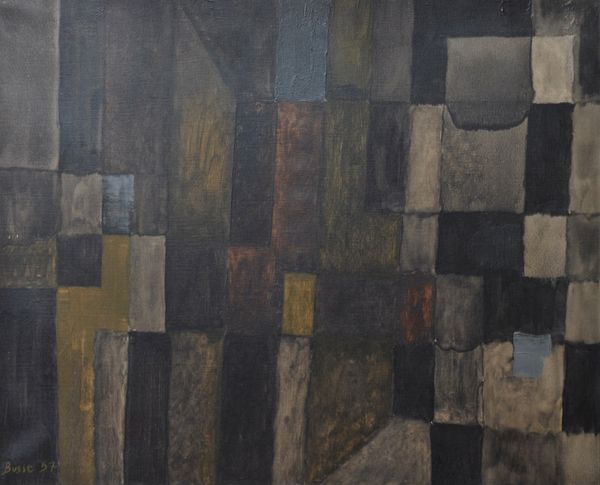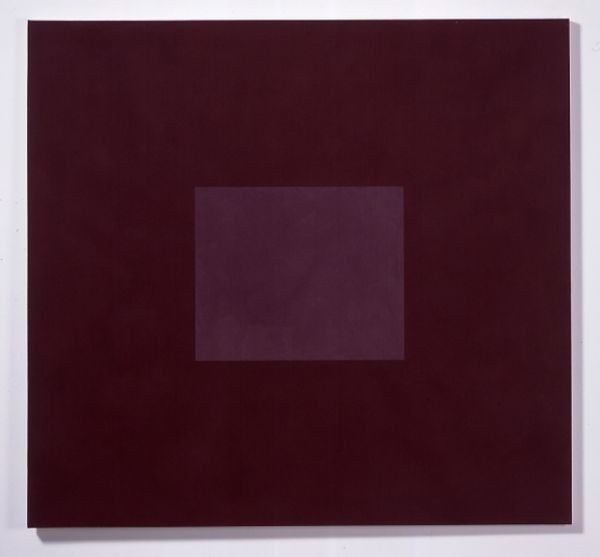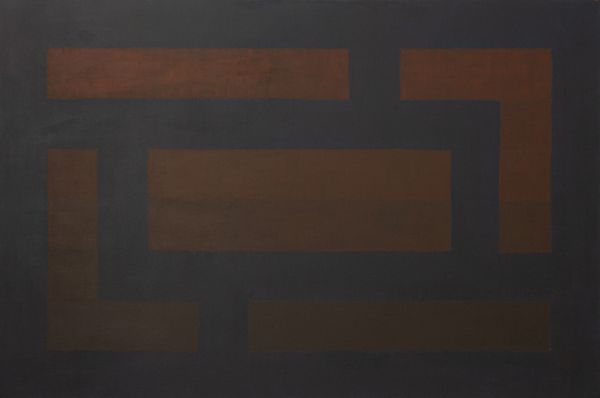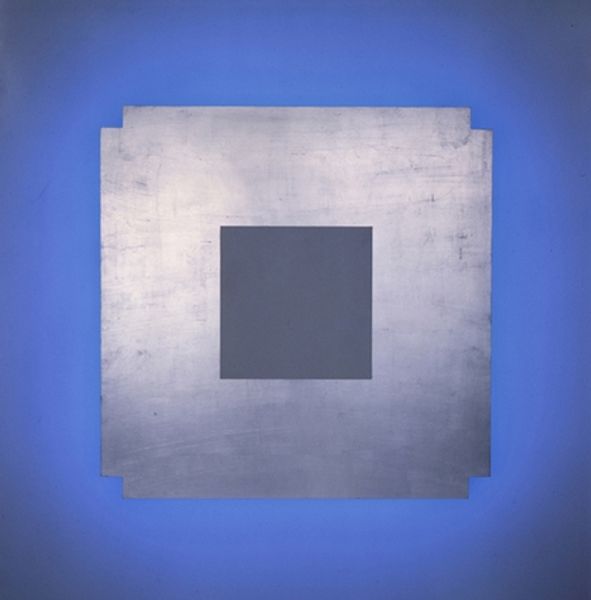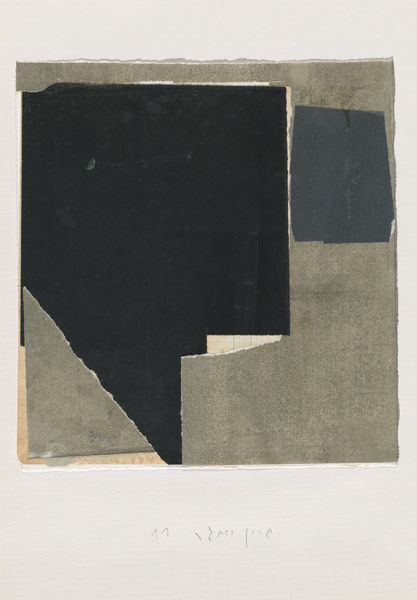
mixed-media, collage
#
natural stone pattern
#
mixed-media
#
collage
#
rectangle
#
geometric
#
underpainting
#
square
#
abstraction
#
line
Copyright: Robert Nickle,Fair Use
Curator: Here we have Robert Nickle’s “Untitled (black on orange),” a mixed-media collage dating to 1969. Editor: It immediately strikes me as something like a shadow box, but the shadow has solidified. There’s a stark geometric tension, all those rigid black rectangles adrift on a sea of muted orange. Curator: Absolutely. Nickle was intensely interested in the re-use of discarded materials, in this case fragments assembled into this carefully considered composition. The use of collage reflects an artistic interest in elevating mundane or waste material. Editor: Collage as an act of symbolic recovery, perhaps? Taking fragments – literal scraps – and imbuing them with new significance, building a new order from apparent chaos. I wonder, too, about the tension between the black and orange; darkness contained or contrasted against a grounding earth tone? Curator: It’s less about containment, I think, and more about dialogue. Look at the surface of the black squares—varied textures, different light reflecting off them. It suggests a multitude of origins. These fragments might be pieces of a building, or repurposed refuse given a second life. Nickle often focused on texture and material, exploring ways these combined. Editor: But consider how those forms play together. The square grid arrangement against the backdrop is almost like a city plan seen from above. We create structures of order and then, within them, pockets of darkness, the unknown or the unseen parts of ourselves. Curator: The materials, I believe, speak directly to that contrast. Nickle deliberately utilizes "low" materials— things that others might have overlooked and discarded, challenging conventional notions of what constitutes art. Editor: And maybe it's in that tension where the art truly resides, where discarded material is raised to icon, an arrangement of form with symbolic weight. There is a power in ruins, after all. Curator: Ultimately, I think it invites us to reconsider how we value materials and how meaning is manufactured. Editor: It reminds us that symbols don't just appear—they evolve.
Comments
No comments
Be the first to comment and join the conversation on the ultimate creative platform.
